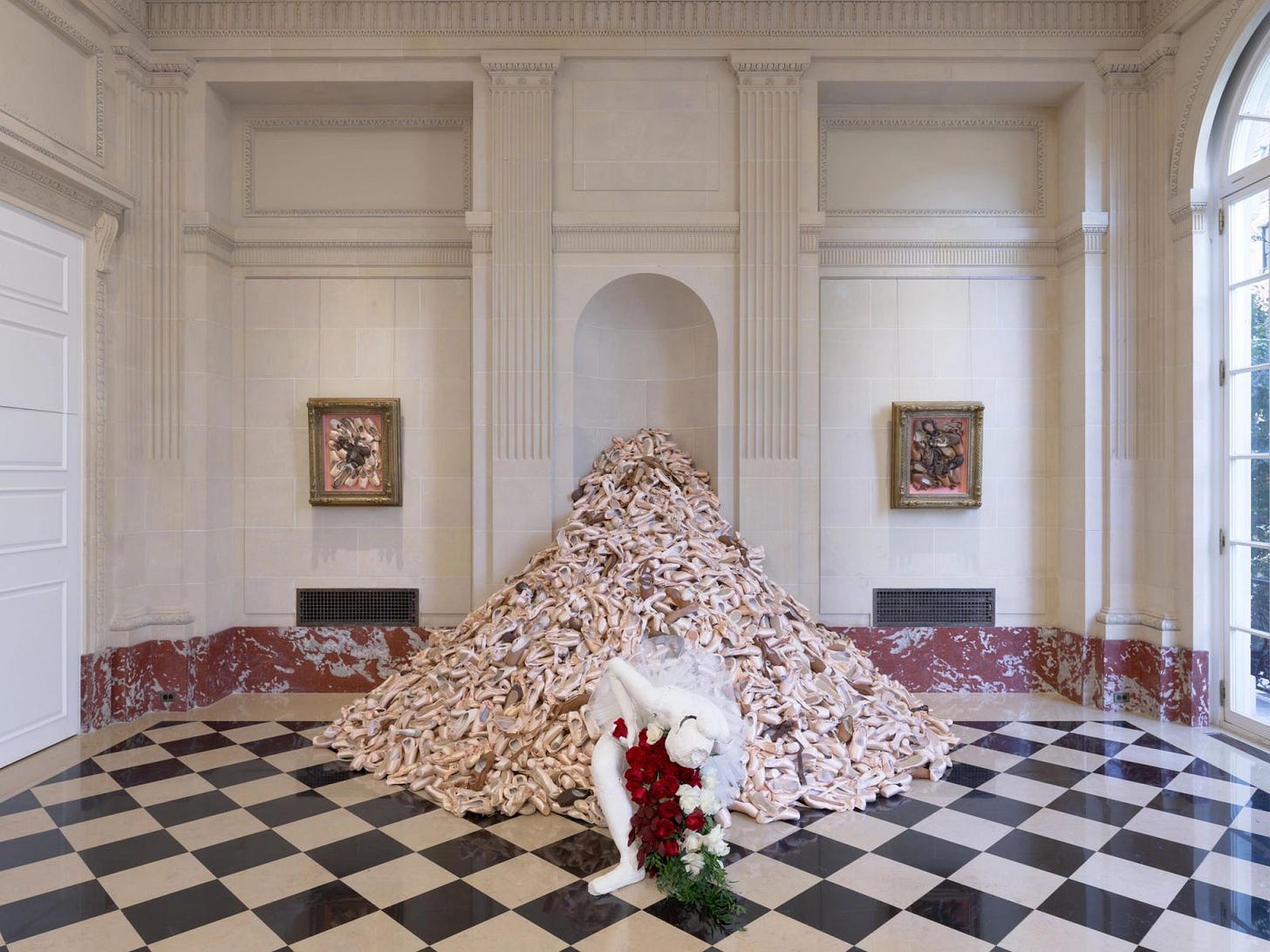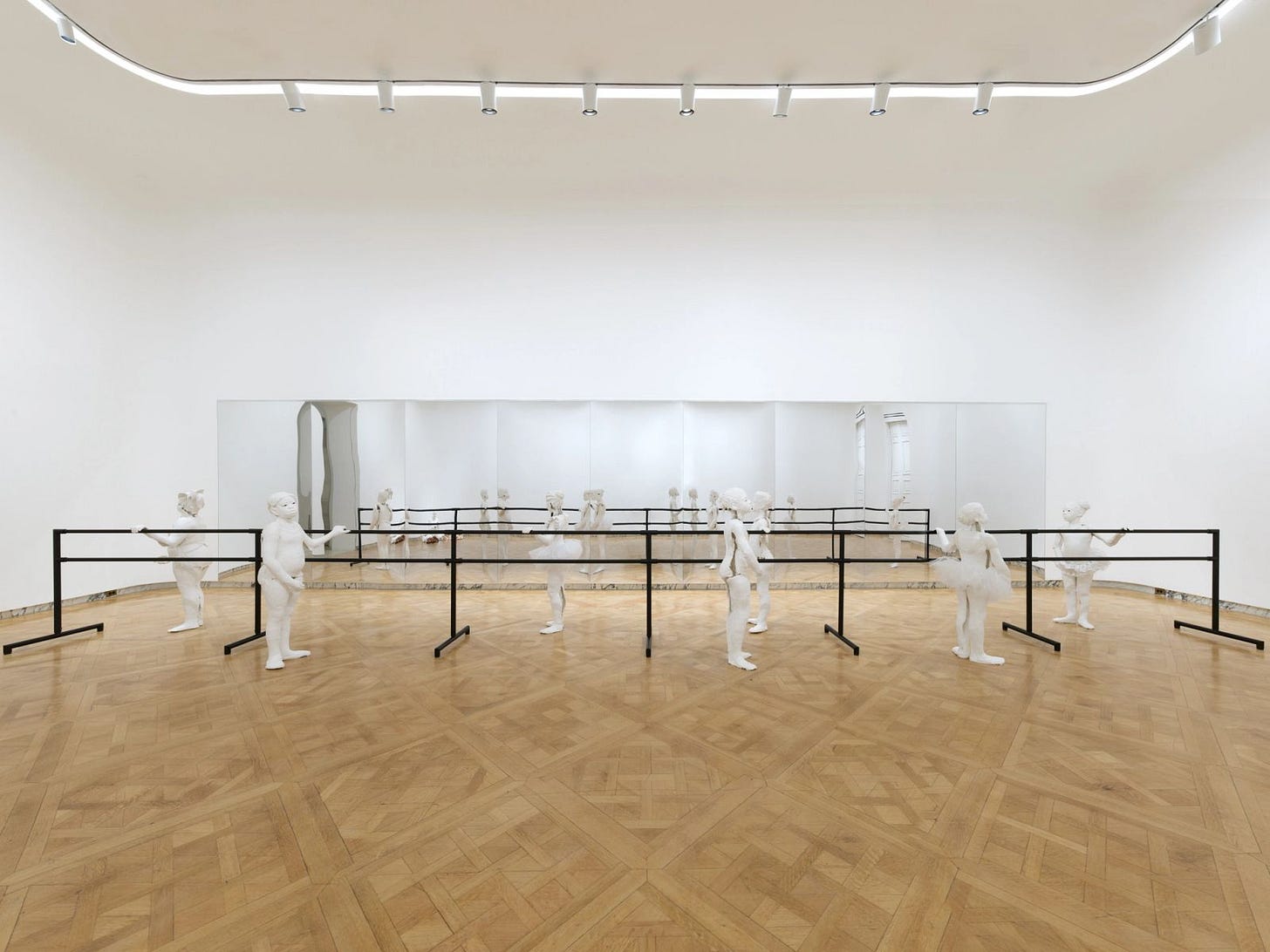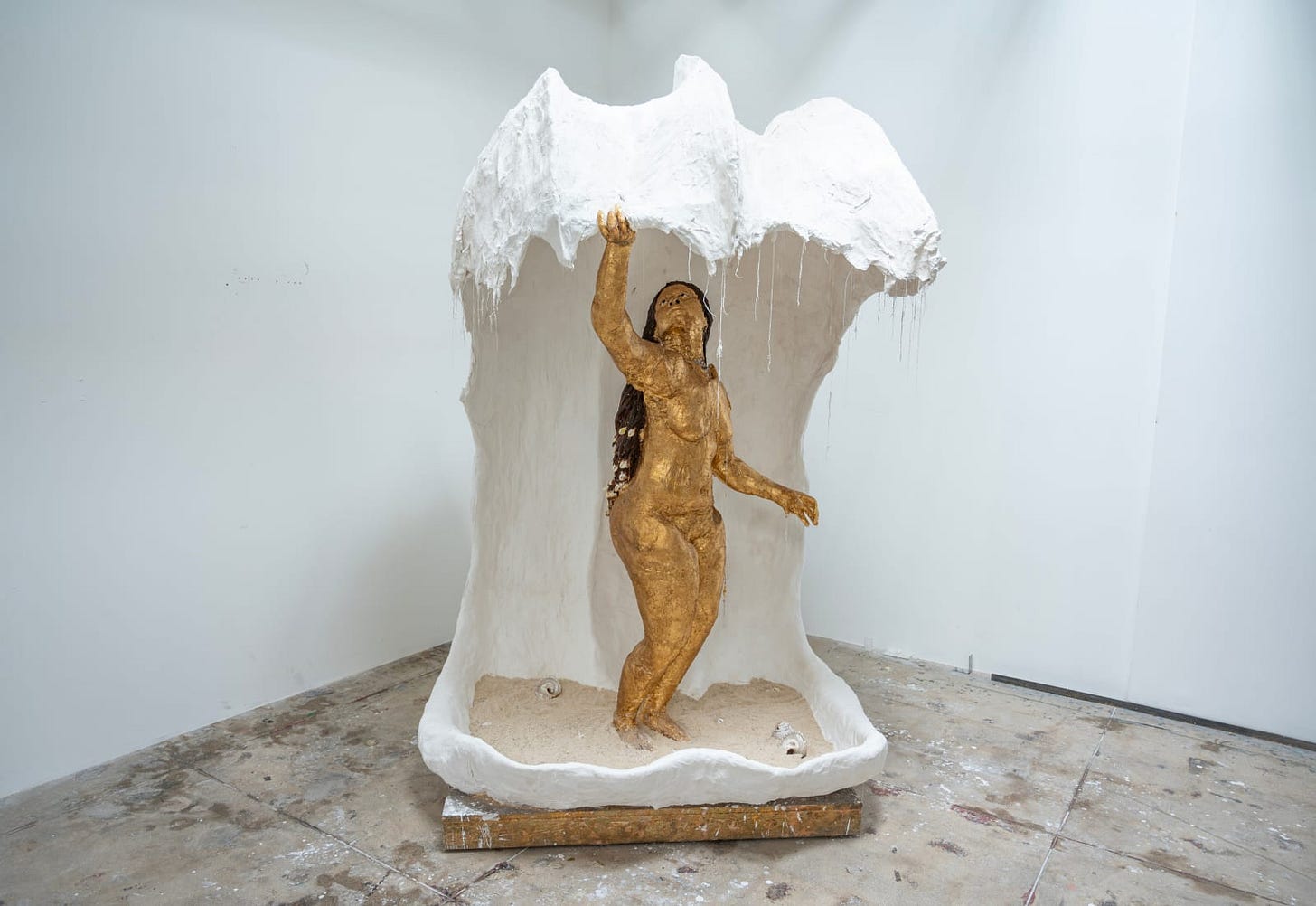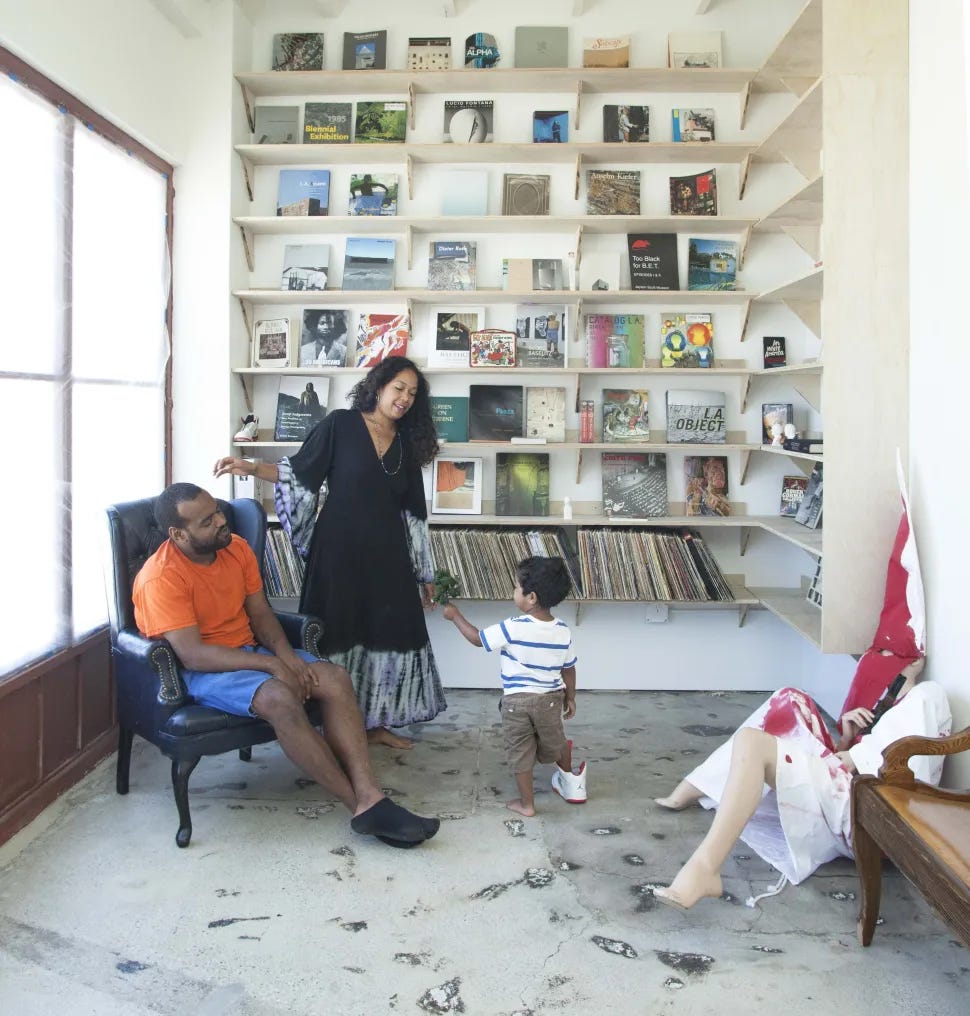Karon Davis’s exhibit, Beauty Must Suffer, was shown at Salon 94 from October 12th to December 23rd, 2023. While I wasn’t able to make it to New York during that period, I’ve experienced what I can through available digital galleries and photos from local friends. Salon 94 is a perfect venue for an exhibit such as this: bright, austere, and refined without being sterile, allowing the art to be presented as if the viewer were gazing into a highly curated home, and not a museum. At the same time, the isolation and toil of Davis’s sculptures is evident through, and not in spite of, the backdrop.
My parents put me in ballet as a toddler at New Haven’s Neighborhood Music School, and the discipline has followed me into adulthood, as I continue to take lessons at the Boston Ballet School and Jose Mateo Ballet Studio today. I am particularly moved by the dance form on stage and am drawn to other works that reference or use ballet as a medium (see: Black Swan (2010) dir. Darren Aronofsky, The Red Shoes (1948) dir. Powell and Pressburger, the Ballerina Project (2019) by Dane Shitagi). Something about balletic acts of expression captivates me, and truly great dancing, like Alessandra Ferri as Juliet in 2000 (Sir Kenneth MacMillan’s Romeo and Juliet) and again in 2016, at age 53, moves me to tears. I’ve been fortunate to witness a handful of ballets in person, from Swan Lake to The Nutcracker to Giselle, and each performance imbues me with a sense of wonder, in seeing the bodies onstage conform to the forms that have been diligently trained into them, so that they appear as Platonic ideals.

I was in between middle and high school when Misty Copeland was promoted to principal at the ABT. I read and reread her memoir, Life in Motion, moved by her account of having to pancake her shoes to match her skin tone. I discovered ‘hiplet’ shortly after, a fusion of ballet and hip-hop pioneered by the Chicago Multi-Cultural Dance Center, a significant 21st century Black contribution to the dance world. Ballet has historically been a white European art form. With origins in the Italian tradition, later adapted by the French and Russian, ballet necessarily comprised limited class and ethnographic groups. Asian people benefit from this white standard as well, with the privilege to wear light colored ballet wear and benevolent prejudicial assumptions of demurity and obedience, paramount to the highly precise and uniform art of ballet. Other challenges arise, however, such as yellowface in character portrayals (see: variations of costume and makeup for the Chinese “Tea” dance in The Nutcracker). Color, in ballet, is of unavoidable consequence.
Beauty Must Suffer “examines the life and labor of Black dancers in their pursuit of a perfect form within the historically European tradition of ballet” (Salon 94).
“Staged at the beginning of the twentieth century by the Ballets Russes, it is a myth that perpetually returns, striking, as it does, the deep human chords of repetition and despair, entrapment and desire. And now that we all live in an echo chamber of our own algorithms, the figure of the narcissist appears to be the governing personality type of our age. Karon has combined these mythic constraints with the ruthless rigor of the ballet, an art form in which conformity to Western (read: white) beauty standards is unflinching. To be long, lithe, and perfect, you must endlessly repeat exercises at a barre in front of a mirror. You work your body until it hurts. You break your body. You hide all the pain in the name of beauty.”
— Helen Molesworth
Davis, too, suffered. Her husband, fellow artist, Noah Davis, passed away at the age of 32. Noah, an installation artist and painter, whose work also centered depictions of Black folks in ordinary and surreal situations, desired to make art accessible. Thus, their Underground Museum came into being in Arlington Heights, a historically Latino and Black neighborhood of Los Angeles. The UM closed indefinitely in March 2022 (“We Simply Do Not Have Any Answers”), 10 years after its opening. During its tenure, the Davis show highlighted Noah’s atmospheric and dreamlike works, in addition to other underrepresented Black artists.

I have always admired great artist pairings, from Sartre and De Beauvoir to Smith and Mapplethorpe. The Davises had one such rare union, with Noah encouraging Karon to pursue her art not as “a closet artist” but to pursue it unbarred. Karon’s exhibits are particularly evocative, from her unabashed Sable Venus (derived from Botticelli’s Birth of Venus) to her disquieting “No Good Deed Goes Unpunished” on the Black Panthers’ free food program and the Chicago 8 trial. Her work characteristically uses white plaster, “mummifying the stories of Black history that she is driven to tell”. Their joint legacy continues on in their son, Moses, and in the art world’s lasting reverence for their contributions.
I’ve been thinking about the Davises intermittently over the last few years and drafting this piece over the course of months. It’s now Black History Month, and my book club is reading “The Swans of Harlem” by Karen Valby, about five Black ballerina pioneers who founded the Dance Theatre of Harlem. Karon’s images supplement my reading, reminding me of the toil that necessarily begets great art.
There is pain in the inspiration, pain in the creation, pain in the showing, in the opening of one’s soft underbelly to the harsh knife of criticism. But the Davises uniquely understood the additional standards placed on them, as Black creatives in America. The rules are different, the burdens legion.
Just yesterday, Karon came back into my periphery. She spoke to Observer about “Ancient Reign”, David Zwirner’s tribute exhibit for Noah Davis, which closed in January. Karon remembers their relationship as a creative dialogue, and the task of selecting Noah’s collages as an opportunity to demonstrate the multidisciplinary nature of his artistry. On a personal level, she noted: “My assignment is to gather these parts of my love and protect them”. What is grief, if not love persevering?
Great love and great art live on in the Davises. In thinking about their suffering, in thinking about ballet, I’m compelled by the philosophy of aesthetics, where great beauty is the ultimate pursuit which in itself justifies all sacrifice. I like the contours of criticism, the matters of taste. I’m interested in the ephemeral: the transient, perfect, movements on a stage, the bright light of a wonderful life against the cavernous eternity of time, the train rides and late evenings in front of a computer, typing and revising the select words that will form a whole story.
Il faut souffrir pour être belle










This was such a well crafted post and I thoroughly enjoyed it! It’s funny because I too danced at Boston ball school in the pre professional division and am now a ballerina in London. I loved your perspective and the quotes you drew from on the topic of the harmful ideals and aesthetics in ballet and i actually wrote something similar! Feel free to give it a read if you would like xx https://open.substack.com/pub/kyramccusker/p/bound-by-satin?r=26wyxy&utm_medium=ios